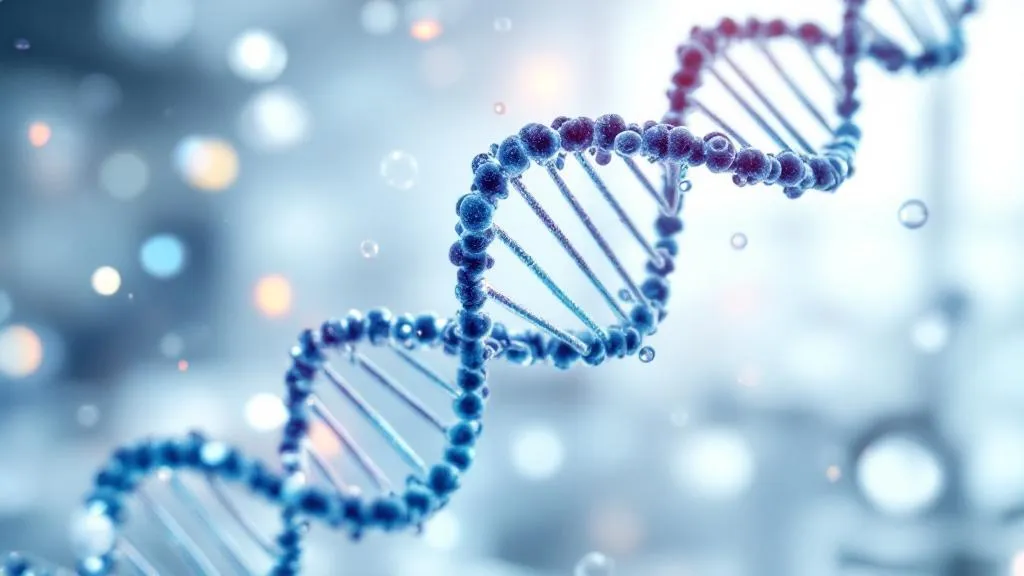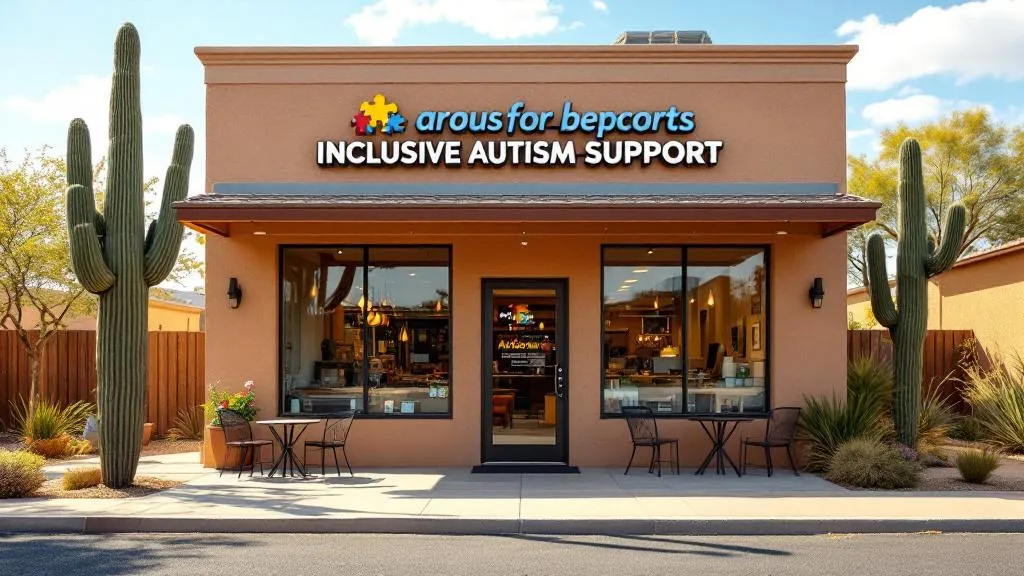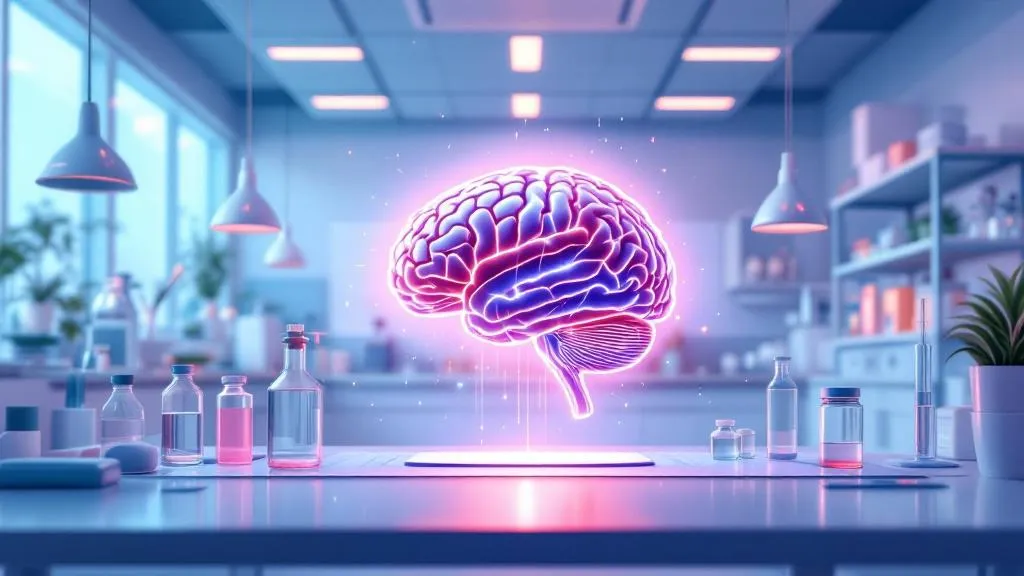Which Parent Carries The Autism Gene?
Decoding the Genetic Origins of Autism: Paternal and Maternal Contributions

Understanding the Complex Genetics of Autism
Autism Spectrum Disorder (ASD) is a neurodevelopmental condition characterized by a wide range of behavioral and cognitive features. Recent advances in genetic research reveal that autism’s roots are deeply embedded in our DNA, involving numerous genes and complex inheritance patterns. This article explores which parent most likely carries the autism gene, the genetic mechanisms involved, and how familial and environmental factors interplay in autism risk.
The Strong Genetic Foundation of Autism

What percentage of autism is genetic?
Research consistently demonstrates that genetics play a dominant role in autism spectrum disorder (ASD). Estimates of heritability vary widely but generally indicate that more than half of autism cases can be traced back to genetic factors. Twin studies, which compare the concordance rates of ASD between monozygotic (identical) and dizygotic (fraternal) twins, reveal heritability figures ranging from 36% to over 90%. A closer reanalysis of these data suggests rates around 83% to 90%, confirming that genetics are the leading influence.
Most genetic mutations associated with autism are inherited rather than spontaneously occurring. These inherited mutations significantly increase the risk of developing ASD. Although environmental factors can contribute to risk, their role is relatively minor, estimated at about 4%, in comparison to genetic influences. Overall, approximately 80% or more of autism cases are believed to have a genetic basis, highlighting the importance of genetic factors in understanding ASD.
What is the proportion of autism cases attributable to genetic factors?
The genetic contribution to autism spectrum disorder is substantial. Heritability estimates generally fall between 64% and 91%, with most research pinpointing a figure around 83% to 85%. These high estimates come from twin studies that show very high concordance rates in identical twins (70-90%) and significantly lower rates in fraternal twins, underscoring the genetic contribution.
Multiple gene variations contribute to ASD. For example, mutations in genes like CHD8 and SHANK3 have been strongly linked to increased autism risk. Most of these mutations are inherited from parents, although some arise sporadically due to spontaneous mutations, also known as de novo mutations.
Environmental influences do exist but seem to play a less prominent role. They are estimated to account for around 4% of autism risk, and interactions between genes and the environment can further complicate the picture. Nonetheless, the predominant factor remains genetic, making heritable genetic variations the primary driver behind autism.
| Aspect | Estimate | Details |
|---|---|---|
| Heritability range | 36% – 90% | Based on twin studies |
| Most genetic mutations | Inherited | Genetic origins of ASD |
| Spontaneous mutations (de novo) | Significant | Up to 50% in some cases |
| Environmental contribution | About 4% | Less than genetic factors |
| Overall genetic attribution | 80% or more | Dominant cause of ASD |
The complex inheritance patterns include multiple genes, single mutations, and the interaction of genetic and environmental factors. Ongoing research continues to uncover gene variants that influence ASD risk, leading toward more targeted diagnostics and potential therapies.
Paternal Influence: The Parent Most Likely to Carry Autism Genes

Who carries the autism gene, mother or father?
Research indicates that autism has a significant genetic component and can be inherited from either parent. However, recent scientific findings point toward a stronger influence from the father. Studies involving families with autistic children have shown that siblings are more likely to share genetic material from their father—nearly double the rate compared to the mother.
Specifically, some research suggests that autism-related genes are preferentially inherited from the paternal side. Genetic mutations that contribute to autism are more commonly found in paternal DNA, especially in cases where spontaneous mutations occur. Nevertheless, it is important to acknowledge that autism results from a complex interplay of multiple genes inherited from both parents, along with spontaneous mutations that can happen in either parent. Despite the role of both, current evidence emphasizes a more prominent influence from paternal genetics.
Is autism inherited from the father or mother?
The inheritance pattern of autism strongly points toward the paternal contribution. About 66% of the shared genetic material among siblings with autism comes from their father, whereas only around 30% is inherited from the mother.
In a comprehensive study analyzing over 6,000 families, researchers observed that in cases with multiple autistic children, there was a notable increase in shared paternal DNA. These findings challenge earlier assumptions that maternal genetics played a more significant role in autism inheritance.
Additionally, paternal age has been associated with a higher likelihood of genetic mutations linked to autism, possibly due to accumulated mutations in sperm over time. These spontaneous mutations often occur in genes crucial for early brain development or neural connectivity.
Overall, the data supports the idea that paternal genetics are a substantial source of autism risk factors, with mutations and inherited variations more frequently passing from fathers to their children in autism cases.
Spontaneous Mutations and De Novo Factors in Autism Risk
Can two parents with no history of autism have an autistic child?
Even if both parents have no known personal or family history of autism, their child can still be born with autism. This is primarily due to spontaneous genetic changes known as de novo mutations that occur in the child's DNA.
De novo mutations are new genetic alterations that are not inherited from either parent but instead happen anew in the child's developing genome. These mutations can impact about 239 genes associated with autism risk, especially when they disrupt the normal function of these genes.
Research estimates that nearly half of all autism cases, particularly those involving only one affected child in a family, are linked to these spontaneous mutations. This means that even in the absence of family history, autism can still occur due to these genetic changes.
While inherited genetics and environmental factors also influence autism development, spontaneous mutations provide an essential pathway for the disorder to manifest independently of parental autism history. The complexity of autism's genetic architecture involves both inherited variations and new mutations, making it a multifaceted condition influenced by multiple factors.
What are spontaneous mutations and their significance in autism?
Spontaneous mutations, or de novo mutations, are genetic changes that appear in a child's genome but are not present in the genomes of either parent. These mutations often occur during the formation of sperm or eggs and can affect critical genes linked to autism.
Many autism-related genetic mutations are spontaneous, taking place in the child's genome and not inherited from the parents. These de novo mutations can be responsible for up to 50% of autism cases where there is no prior family history. They are particularly significant in cases with a single affected individual (simplex cases).
Children carry tiny mutations in their genes, introduced during reproductive cell development, which can influence brain development and behavior. Some of these mutations involve genes that normally require two functioning copies for proper operation. When a spontaneous mutation disrupts one copy, it can have profound developmental effects.
Research highlights the importance of de novo mutations in autism's genetic landscape, especially since they can explain cases without a familial background of the disorder. Understanding these mutations is vital for developing targeted interventions and improving genetic counseling.
The Role of Parental Traits: Gender and Autism Carriage
Who is most likely to inherit autism?
Autism inheritance is complex and influenced heavily by genetics. Research indicates that about 80% of autism cases are linked to inherited genetic mutations. These mutations can be passed down from family members with a history of neurodevelopmental disorders or arise spontaneously.
Individuals at higher risk often have a strong genetic background, including specific mutations in genes such as MECP2, SHANK3, and CNTNAP2. De novo mutations—those that occur for the first time in a child and are not present in the parents—also play a significant role, accounting for many of the spontaneous cases.
Family history, especially involving fathers and grandparents, can increase the likelihood of passing on genetic susceptibility. Monozygotic (identical) twins show higher concordance rates, further confirming the heritable nature of autism.
Overall, inheritance involves multiple genes, structural genetic variations, and epigenetic factors, making it a highly intricate process that primarily hinges on genetic predisposition.
Are autism traits more evident in mothers or fathers?
Research shows that autism traits are more closely linked with subtle behavioral features in mothers than in fathers. These characteristics often relate to language and social communication difficulties.
Women with traits associated with the broad autism phenotype (BAP), such as pragmatic-language difficulties, tend to carry genetic variants that elevate autism risk. These variants can account for up to half of the genetic influences on autism.
Studies utilizing tools like the Broad Autism Phenotype Questionnaire (BAPQ) reveal that while fathers may score higher overall on certain autism trait measures, their scores do not correlate as strongly with their children's autism traits.
Furthermore, women with high polygenic scores—an aggregate measure of numerous genetic variants—often exhibit autism-related traits without being diagnosed themselves. This phenomenon supports the 'female protective effect' theory, which suggests that women need a higher burden of genetic factors to exhibit autism traits.
Consequently, mothers with autism-related traits may pass on genetic susceptibility to offspring, even if they do not meet criteria for an autism diagnosis. This pattern underscores the importance of maternal genetic contributions, particularly related to language and social communication, in the inheritance of autism.
Advances in Autism Genetics and Future Directions

Is autism hereditary or genetic?
Autism has a strong genetic foundation, with studies estimating that about 80% of cases are linked to inherited mutations. These genetic factors are complex, involving many gene variations and spontaneous de novo mutations—new genetic changes that occur in the affected child and are not inherited from the parents. Such mutations often impact early brain development, neural communication, and connectivity between brain regions. While environmental factors like prenatal exposures and parental health may influence autism risk, they are less common compared to genetic influences. Family and twin studies consistently show that autism tends to run in families, emphasizing high heritability. Overall, current evidence confirms that autism is largely genetic, stemming from a mix of inherited genetic variations and new mutations.
What recent discoveries support a paternal bias in genetics?
Recent research from Cold Spring Harbor Laboratory involving over 6,000 families has shed new light on paternal contributions to autism. The study found that in families with multiple autistic children, siblings shared more of their father's genome than their mother's. This indicates a significant paternal influence, which challenges earlier beliefs that maternal genetics played the dominant role in autism inheritance.
The research was published in the peer-reviewed journal Cell Genomics, underscoring its credibility. It revealed that genetic mutations from the father may be more influential in autism development than previously thought. These findings suggest that paternal age and genetic variants are particularly relevant factors. This research not only advances our understanding of autism's genetic basis but also opens new pathways for targeted interventions.
How is genetic research shaping future treatments for autism?
The growing understanding of autism's genetic roots is revolutionizing how researchers approach treatment. Identifying specific autism-associated genes and mutations enables the development of targeted therapeutics tailored to individual genetic profiles. This personalized medicine approach aims to address the fundamental biological causes of autism, potentially leading to more effective interventions.
Furthermore, ongoing research emphasizes the importance of understanding gene-environment interactions. For example, environmental exposures like air pollution, pesticides, and parental age can influence the risk in genetically susceptible individuals. Using genetic testing, clinicians may identify at-risk children early, allowing for earlier and more tailored interventions. Such advancements could significantly improve long-term outcomes, quality of life, and support strategies.
The integration of genetic insights into clinical practice promises a future where personalized therapies can mitigate symptoms or even modify developmental trajectories in autism spectrum disorder. As our genetic understanding deepens, it paves the way for innovative treatments that target the biological underpinnings of autism, offering hope to many families.
| Aspect | Details | Implications |
|---|---|---|
| Hereditary vs. Environmental | 80% of autism linked to genetics; environment plays a smaller role | Focus on genetic testing and early diagnosis |
| Paternal Bias | Families with multiple affected children share more paternal genome | Studies suggest paternal mutations are more influential |
| Genetic Mutations | Multiple genes involved; spontaneous mutations common | Targeted genetic screening can help identify risks |
| Future Treatment Strategies | Personalized therapies based on genetic profiles | Now feasible with advances in genetic research |
| Environmental Factors | Prenatal exposures, parental age, pollution influences | Ongoing research aims to understand interactions for better prevention |
What is the current state of autism genetics research?
Researchers estimate that between 200 to 1,000 genes may influence autism susceptibility. Most cases involve inherited mutations, with about 80% stemming from family-linked genetics. Notably, many mutations appear spontaneously in the child, known as de novo mutations, which account for roughly half of all autism cases. These spontaneous mutations typically occur during sperm or egg formation, causing small but significant genetic changes.
Autism's genetic architecture is complex, involving numerous genes and interactions, with polygenic inheritance—that is, multiple genes contributing—and gene mutations playing crucial roles. Emerging research efforts, such as those analyzing large datasets like the Simons Simplex Collection, continue to deepen our understanding of these genetic factors.
Advances in genetic testing allow for identification of risk markers, such as mutations associated with fragile X syndrome and co-occurring conditions like epilepsy. These insights not only aid early diagnosis but are also guiding the development of targeted therapeutics, moving toward more precise and effective interventions.
In conclusion, the study of autism genetics is advancing rapidly, driven by large-scale research projects and sophisticated genetic analyses. These efforts are critical for shaping future diagnostics, therapies, and understanding the biological mechanisms underlying autism.
| Topic | Details | Impact |
|---|---|---|
| Number of Genes | Between 200—1,000 genes involved | Broad genetic landscape influencing autism risk |
| Mutations | Inherited (80%), de novo (spontaneous, up to 50%) | Guides genetic testing and early intervention strategies |
| Genetic Factors | Critical early brain development influences | Highlights importance of early detection and intervention |
| Research Initiatives | Large datasets, like Simons Simplex Collection | Enable deeper genetic insights and tailored therapeutics |
Understanding the delicate interplay of genetic and environmental factors, along with ongoing advances in research, offers hope for more effective and personalized support for individuals with autism in the future.
The Genetics of Autism: A Complex and Evolving Field
The accumulating evidence underscores that autism's genetic basis is intricate, involving both inherited mutations primarily from the father and spontaneous de novo mutations. Both maternal and paternal genetics contribute to autism risk, but recent findings highlight a notable paternal bias in the transmission of autism-related genes. While genetics account for the vast majority of autism cases, environmental factors also play a role, particularly those influencing early brain development. Understanding which parent carries the autism gene is crucial for advancing diagnostic and therapeutic strategies. As research progresses, the goal remains to unravel autism's complex inheritance patterns further, ultimately enabling more precise interventions and support for affected individuals and their families.
References
- Which Parent Carries the Autism Gene?
- What causes autism? | Autism Speaks
- Traits in mothers may signal gene variants for autism | The Transmitter
- Is Autism Genetic? | UCLA Medical School
- Where does autism come from when it doesn't run in the family?
- Siblings with autism share more of dad's genome, not mom's
- Which Parent Carries Autism Gene? | Blossom ABA Therapy
- Is Autism Genetic? | UCLA Medical School
- Autism Spectrum Disorder (ASD) Symptoms & Causes
Does Your Child Have An Autism Diagnosis?
Learn More About How ABA Therapy Can Help
Find More Articles
Contact us
North Carolina, Nevada, Utah, Virginia
New Hampshire, Maine
Arizona, Colorado, Georgia, New Mexico, Oklahoma, Texas
.avif)


































































































